Peperomia Plant - Characteristics, Varieties, Watering, Propagation
Peperomia is a common houseplant appearing in houses and apartments. It's popular because of many varieties to choose from, thanks to which everyone can pick the best plant fitting their expectations. Check what peperomia looks like and learn what you should know before taking one home.
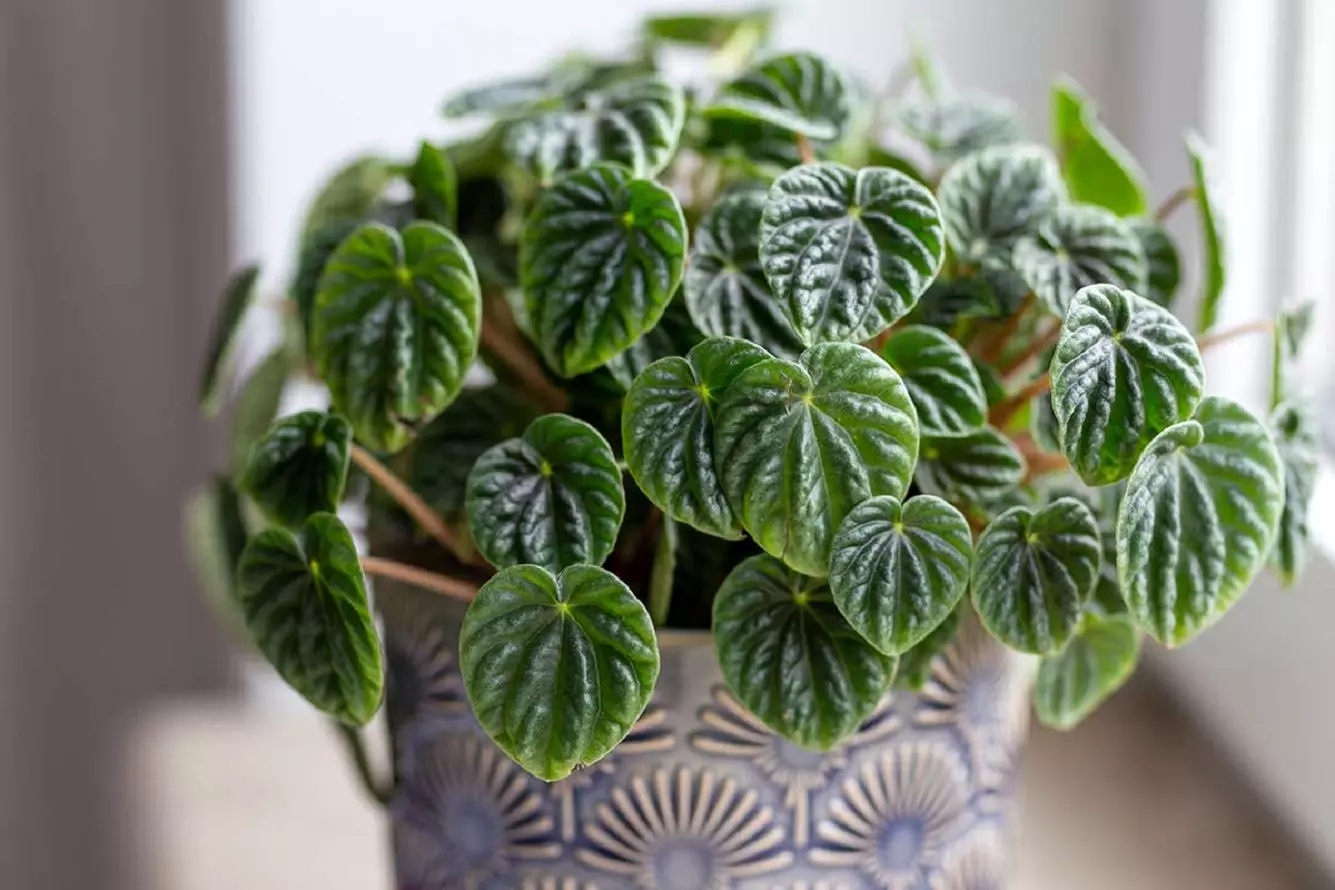
Peperomia – what kind of plant is it?
Peperomia (Peperomia) is often called a radiator plant. According to the official classification, it belongs to the family of pepper plants. In most places in the world, it is cultivated as a houseplant. But it also grows in natural conditions – mostly in Middle and South Americas.
Interestingly enough, there are over 1500 different varieties of this plant, which only confirms how popular it is.
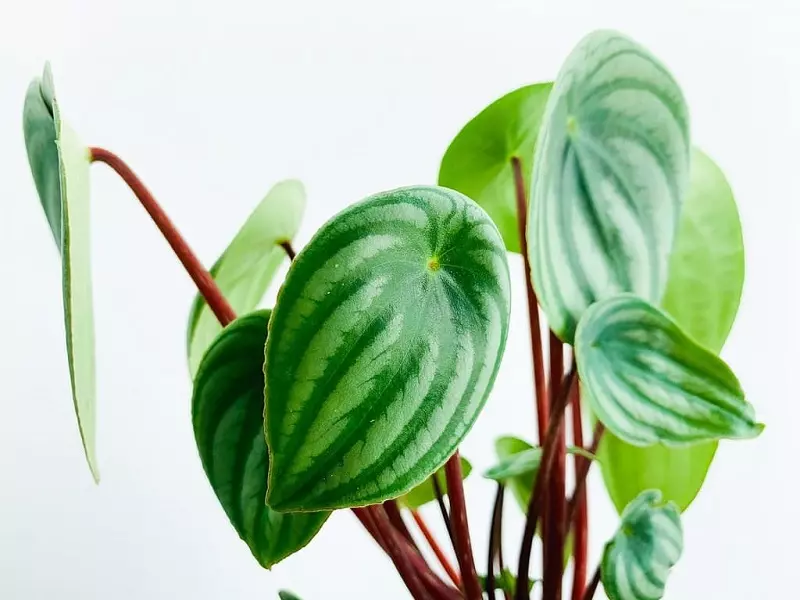
What does peperomia look like?
Peperomia belongs to the group of small plants. Typically, the maximum height it can achieve is about 20-30 cm (8-12 in) – for most varieties. Thanks to this, these plants are perfect as a green decoration even in a very small apartment.
The leaves are peperomia’s main decorative element. Interestingly enough, each variety looks different. Leaves have different shapes, colors, and even edges. Depending on the species, the plant’s habit is different as well. Some are more trailing, while other resemble small bushes.
Peperomia – various species
Peperomia is a group of plants divided between various species. Many people decide on one of the most popular - peperomia obtusifolia, also known as baby rubberplant. Apart from this one, there are other types such as:
- peperomia caperata,
- peperomia glabella,
- peperomia magnoliifolia,
- peperomia watermelon,
- peperomia clusiifolia.

Peperomia – noteworthy varieties
Apart from the division into species, peperomia also has different subvarieties. Of course, some are more popular than others – this applies mostly to plants from the magnofolia (spoonleaf peperomia) and obtusifolia (baby rubberplant) groups.
Peperomia - varieties from the baby rubberplants:
- Minima,
- Alba,
- Variegata,
- Albo-marginata.
Spoonleaf peperomia varieties:
- Variegata,
- Golden Gate,
- Green Gold,
- Rainbow.
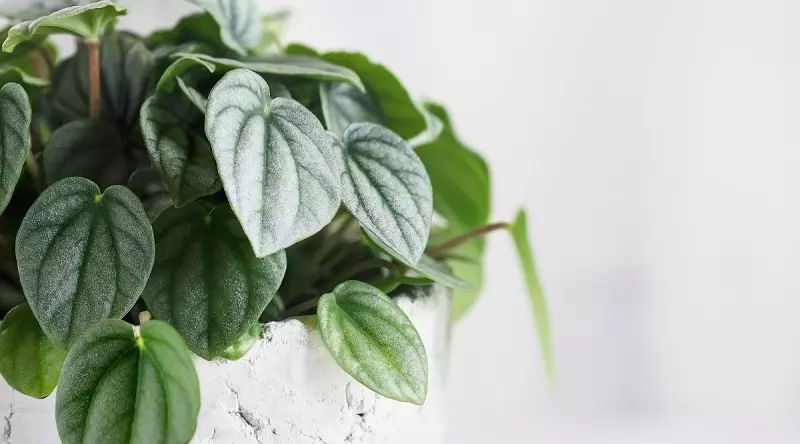
What is the best soil for peperomia plants
Peperomia plant prefers lightweight and permeable soil that is rich in nutrients. The pH should be relatively acidic, preferably between 5.7 and 6.8.
Gardening stores offer potting mixes designed for peperomia plants. Experienced gardeners often decide to prepare their own mixes using soil from their garden, peat, and compost. It can be done, but requires knowledge.
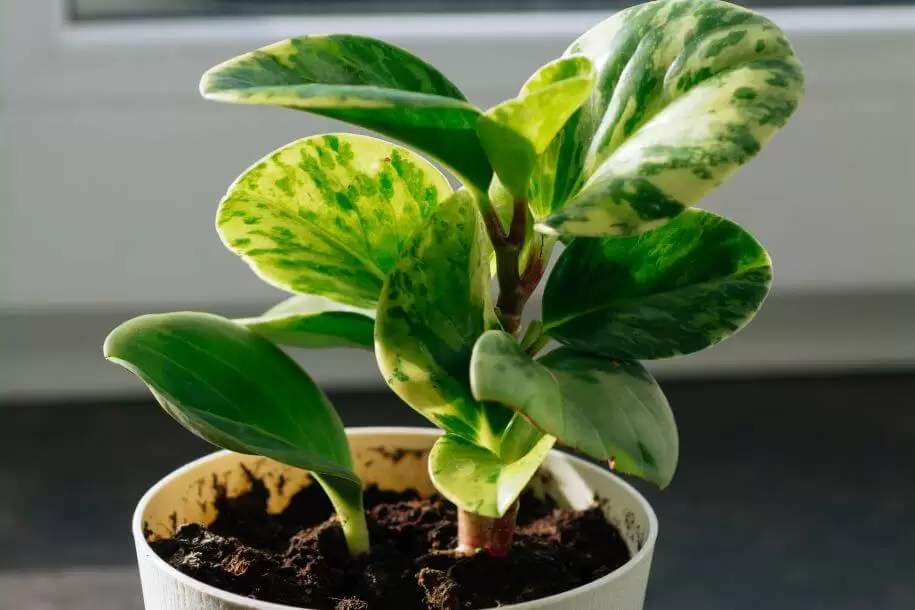
What location does peperomia plant need?
Peperomia is quite a demanding plant when it comes to where it can be placed. It likes sunny places, but at the same time cannot be exposed to direct sunlight – which means a windowsill might not be a good choice.
Placing the pot on a planter close to a window or balcony door is the best option. This way, the plant benefits from dispersed sunlight.
How to water peperomia?
Peperomia doesn’t like too much moisture in its ground, so don’t water it too frequently, as it might cause root rot. Even with low humidity and high room temperature, peperomias don’t require watering more than once every 2 weeks.
Peperomia - possible threats
Peperomia is quite resistant, regardless of the variety you pick. Overwatered soil is the biggest threat to these plants. How to recognize that something is wrong? The leaves begin to droop, and the roots rot. Fungal diseases might also appear, e.g., grey mold.
As for pests, scale bugs are the biggest danger. But they appear quite rarely.
Be extra careful when relocating the plant. Peperomia is quite delicate, so even a slight tug at a leaf might cause damage.
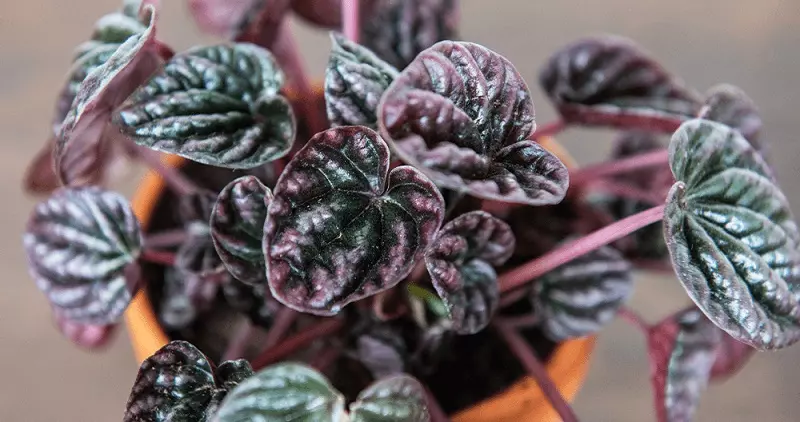
Featured articles




